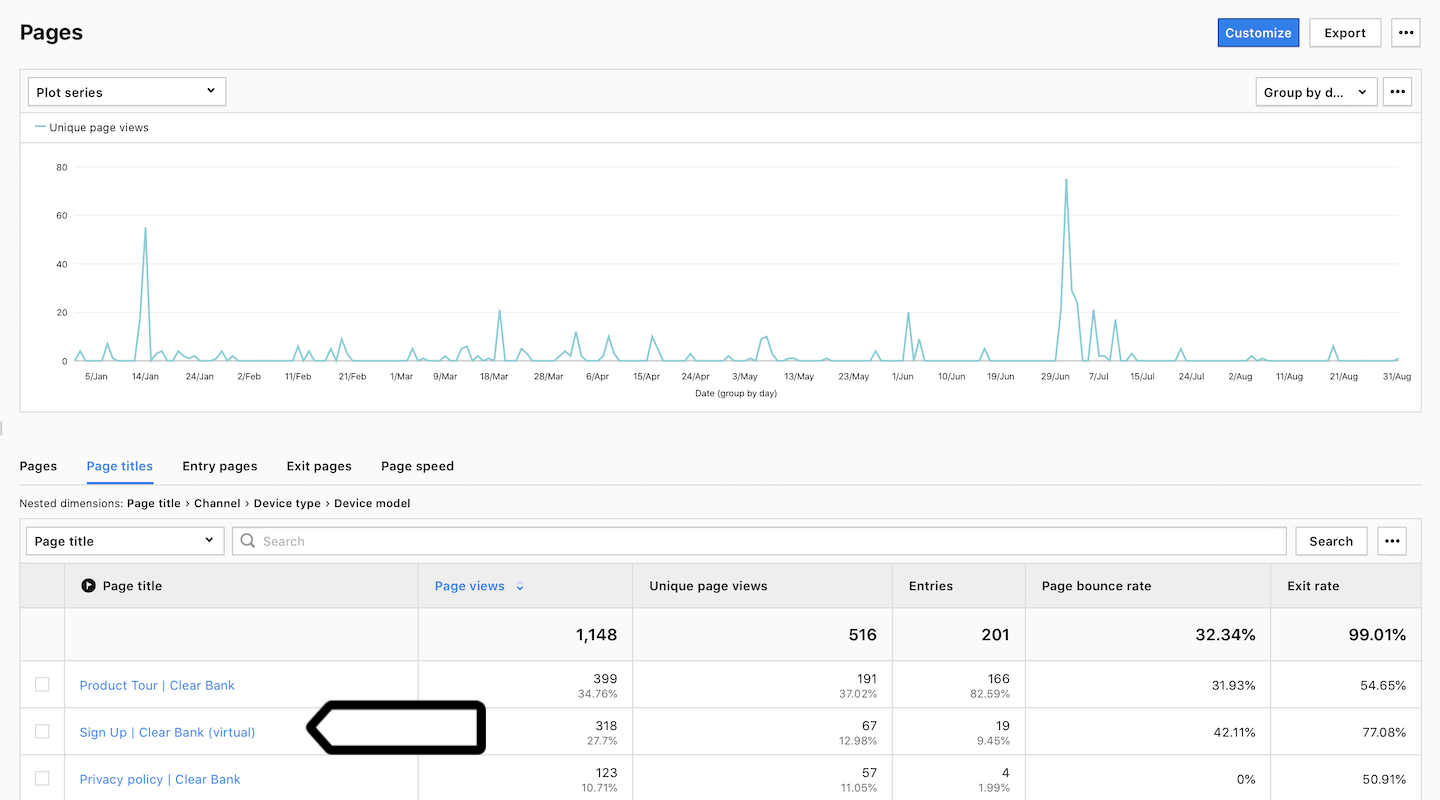A virtual page view tag helps you track elements on your website by creating a ‘pretend’ page. This page shows up in reports with a URL and title, just like a real one.
To set up the virtual page view tag, follow these steps:
1. Go to Menu > Tag Manager.
2. Navigate to Tags.
3. Click Add a tag.
4. Name your tag and select the following type: Virtual page view.
5. Add the URL and document title you want to see in reports for this virtual page view.

Note: You can track a previously created custom dimension by picking the index number of the dimension and providing its value. For more, read this article.
6. In Advanced tag settings, choose Consent type. Set it up if you use a consent form on your site. This tag will only fire for visitors who accept the selected consent type.
7. Respect opt-out and DNT is turned off by default. Turn it on, if you want to respect visitors who’ve turned on the Do-Not-Track feature in their browsers or who’ve opted out of tracking using our opt-out form.
8. In Flight dates, set the date and time when the tag will fire.
9. In Tag triggers, click Add a trigger or Choose existing trigger to set up a trigger for your tag.
Tip: For this tag, we often use a click trigger that fires it when a visitor clicks a specific click ID.
10. Click Save.
11. Test your tag in debug mode.
12. When you’re happy with how the tag works, click Publish.
13. Done! After a while, data will be collected and you’ll be able to see virtual page views in your reports.

